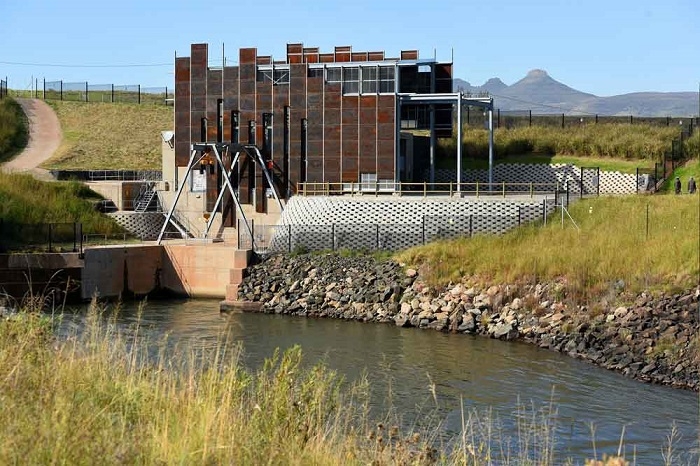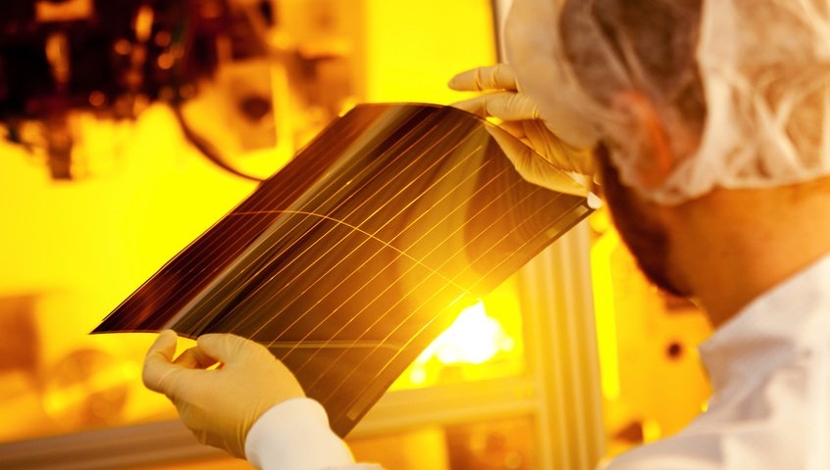
By Daniel van der Merwe, Architect, PPC Ltd
The beginning of civilisation as we know it started with a series of material innovations; the Bronze Age and the Iron Age set us on our current path. Recent excavations at Gobekli Tepe in Eastern Turkey are not only the oldest evidence of an advanced civilisation, but also 12,000-year-old evidence of the use of concrete. The identification of concrete in terrazzo floors is interesting; depressions in bedrock show traces of mixed concrete.The Persians, Syrians, Romans and other early civilisations used concrete – and today mankind still depends on concrete’s versatility to construct the environment we know today. Developing new composite concretes with increased performance and functionality has become a major driver of innovation in recent years and has propelled concrete to the forefront of material research and development.
According to the European Commission’s Industrial Technologies arm of the Research and Innovation department, it is estimated that 70% of all new product innovation is based on materials with new or improved properties. These emergent materials and their associated technologies are changing the way architects and designers work and the way consumers engage with the buildings and products that surround us.Designers are at the forefront of creatively stretching the basic sensory characteristics and performance of materials to deliver new products. And it’s not only in the initial impact which materials must deliver but increasingly materials must make sense in the entire life cycle of products.
Ultra high-performance concrete (UHPC) or reactive powder concrete ‘RPC’
Research is increasing the performance of ultra-high performance concrete (UHPC), or reactive powder concrete (RPC), which is a high-strength, ductile material formulated by combining portland cement, silica fume, quartz flour, fine silica sand, high-range water reducer, water, and steel or organic fibres. The material provides compressive strengths up to 200 MPa and flexural strengths up to 50 MPa. New research suggests that strength equalling that of steel is not too far in the future. The ductility UHPC is a first for concrete, having the capacity to deform and support flexural and tensile loads, even after initial cracking. Using this material for construction is simplified by eliminating reinforcing steel and UHPC’s ability to be virtually self-placing or dry cast. Mathematical modelling enables optimum particle density to be set for particular applications. By adapting the cement content, the water film density can be significantly reduced by up to 40%, considerably increasing the compressive strength. Use of costly additives is unnecessary; material costs are reduced by up to 35%. UHPC has substantial CO2-reducing potential and higher packing density raises resistance to external influences.
BlingCrete™
BlingCrete™ represents a new genre of materials defying conventional description. Also called light-reflecting concrete, BlingCrete™ combines the positive characteristics of concrete (fire safety, solidity, durability) with retro-reflection. Retro-reflecting surfaces send incoming rays of light (sunlight or artificial light) back precisely in the direction of the light source. This is produced by embedding glass microspheres in the concrete.
Retro-reflective surfaces are used primarily where safety is an issue. Typical applications include reflective patches for cyclists and security staff, marking edges and hazardous areas (steps, platforms), integrated building guidance systems, large structural elements and, given its special feel, for tactile guidance for the blind.
Nanomaterial Concrete
Nanotechnology is pushing materials science beyond the limits of what once seemed impossible. When combined with UHPS, nanomaterials such as carbon nanotubes (CNTs) create a material so strong in both tension and compression that steel rebar is no longer needed in construction, thereby expediting the building process.
Textile Reinforced Concrete (TRC)
This is cement-impregnated flexible fabric that hardens upon addition of water to form a thin, durable, waterproof and fireproof concrete layer. This ‘concrete cloth’ comprises a concrete blend and synthetic fibres with a clear PVC backing making the material waterproof. Hydrophilic fibres on the opposite surface aid hydration by drawing water into the cement. When water is added the material remains flexible for two hours and then sets rapidly. Unset, it is flexible and can be cut to shape, nailed, stapled and fixed into complex curvatures using basic fixings. It is currently being used by designers, architects, sculptors and artists for furniture design, complex curved roofing, public sculpture, and digital printing design.
‘Green’ concretes
Recycled concrete aggregate
A dominant trend in sustainability is the need for life-cycle evaluation of materials. This has strong economic incentives for material recovery businesses; today’s material graveyards become the material capital of tomorrow.
All materials must therefore form part of a recall strategy or of greater circulation. Buildings must be designed for disassembly and made from well-defined, recyclable materials. In future buildings, different material streams become valuable resources, necessitating new building systems and disassembly techniques. The new perception of buildings is as resource banks for long-term materials storage.
Crushing concrete to create coarse aggregate to produce new concrete is becoming a common means of achieving more environmentally friendly concrete. Recycling concrete waste will reduce landfill space and save natural resources. Many studies demonstrate the feasibility of using crushed concrete as coarse aggregate, its use already appearing in the regulations of many countries. Tests on concrete containing high-performance cements and superplasticisers show that RCAs can outperform virgin concrete mixes by releasing previously unhydrated cement particles.
Bio-composite concrete
Composite materials blend two or more materials which, when combined, have enhanced properties. Traditionally, fibre-reinforced polymer composites consist of glass fibre and oil-based resins. Bio-composites however are made entirely from biological ingredients – flax fibres, cork, corn and soybeans. Bio-composite materials can be eco-friendly alternatives to traditional building materials.
Biofuel waste concrete
It is predicted that bioethanol production will increase in future because of sustainability. As bioethanol production increases, the amount of by-product also increases. This by-product can be used in concrete.
Researchers have been investigating the by-products from the production of cellulosic ethanol or biofuel manufactured from plants with high fibre, cellulose or lignin content. With the cellulosic ethanol process, there is leftover material containing lignin and some cellulose, but it is no longer feed for animals; currently it is generally burning it for electricity and disposing of the ash.
Research has found that replacing 20% of the cement in concrete mixes with cellulosic material after burning increased concrete strength by 32%. This could affect countries that produce crops like wheat and corn. After harvesting, leftover wheat straw and corn stover could be used for making cellulosic ethanol. Cellulosic ethanol by-products could then be added to cement to strengthen concrete. This has potential value-add for the biofuel and concrete industries. It could help reduce the cost of bioethanol production and of future concrete structures.
Sustainable concrete with tyre-chip aggregate
The world is drowning in waste tyres and recycling is a top priority. Research into concrete containing tyre waste shows encouraging results. Due to tyre chips’ lower water absorption, good workability can be achieved with lower water:cement ratios and hence may be useful for high-performance concrete. This property may lead to a reduction in plasticisers and superplasticisers in these concretes. As the unit weight of concrete decreases with increased tyre-chip content, it may be suitable for lightweight construction. The compressive strength of concrete containing tyre chips shows no notable decrease up to 15% replacement of natural aggregate. This offers an opportunity for entrepreneurs – producing tyre chips and contributing to saving the environment and creating employment. Even more attractive is that cost analyses reveal that rubberised concrete is cheaper than conventional concrete as scrap tyres cost nothing, or very little. There is a direct cost reduction of 10% at optimum tyre chip replacement.
Beetlecrete
‘Beetlecrete’, is a wood-concrete composite, using invasive trees or wood chips from the timber industry. The result is a hybrid material that is shaped with moulds and can be worked with woodworking tools. It is moisture and fire resistant, and weighs half as much as ordinary concrete
Digital fabrication: the future is here!
“Digitization has become so commonplace that [it] is no longer considered for its innovative nature in and of itself, but as a tool for furthering creativity.” Ronald Labaco, Curator NYC Museum of Art and Design.
In an age of rapidly diminishing resources, architects must develop, together with research laboratories, tech leaders, and software designers, construction models that make more with less. This will require new types of mechanical and robotic armatures, which prove more nimble, accurate, and thus efficient, at building both complex and simple structures.
Fabrication innovations have thoroughly and irrevocably changed architecture and design.
Digitally-produced formwork
Concrete innovation is also escalating in precasting by using digital models to fabricate concrete panels and other building components. Precast concrete panels are naturally suited to digital design and fabrication. The ability to form concrete using CNC cut formwork enables 3D digital models to directly connect to the production tooling for building components.
The PPC Imaginarium Creative Awards Platform
This uniquely South African initiative is a pointer to the worldwide trend towards a future of collaboration between designers and materials companies. The dynamics of this relationship are changing fast. Companies are realising the importance of the design community as it pushes the boundaries of possibility. Designing is a cultural activity aimed at filling the gap between what is physically available and experimenting with new possibilities, allowing new products to be brought to commercial fruition. Companies now realise that they must participate collaboratively in the process of product design. Collaboration is the only future – and indeed the only currency left for materials producers as the web grows and the interface between selection and information becomes more seamless.
The Imaginarium Awards not only places PPC in the foreground of supporting South African innovation and design, but also as the key sponsor of local experimentation and product development in the world of cement and concrete.
By Daniel van der Merwe, Architect, PPC Ltd
For more information on this ground-breaking initiative visit: www.ppcimaginairum.co.za
For more interesting articles such as this please go visit the Concrete Trends magazine online :http://concrete.tv/more/concrete-trends





